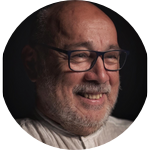About This Project
There is a huge gap in knowledge of deep seafloor habitats. Current methods of studying the deep seafloor require sediment collection. Given the current pressure to mine the deep sea, there is an urgent need for cost-effective tools to better profile and understand this environment. This project proposes adapting a shallow water sediment profiler to deep water -7000m- to collect images in UV-VIS-NIR of the last 10-20 thousand years of records.
Ask the Scientists
Join The DiscussionWhat is the context of this research?
There is a serious gap in knowledge about deep-sea habitats. Deep seafloor stores carbon, a major ecological function that provides life support to the planet's biodiversity. Society is pressing to begin deep-sea mining (DSM) in international waters. The granularity of sampling (1 station every 45 sq km), and lack of time series, make it impossible to dimension the short and long-term impact of DSM. This project will not only increase the coverture of data, and increase granularity, but also provide time-integrated information—the biogeochemical profiles—needed to predict environmental impacts.
What is the significance of this project?
We are reaching a new tipping point concerning ocean acidification. There is a need to increase data (overture and number of samples) from the seafloor with a temporal component. Unless we cost-effectively improve how we assess the deep-sea habitat. There are no tools to realize this challenge on short notice. This project aims to solve this problem. We will provide a tool that will asses a time-integrated view of the biogeochemical status of the sediment-water interface of the deep seafloor.
What are the goals of the project?
To provide a device that will perform at 7000m water depth that will collect biogeochemical information of the seafloor for at least the last 15000 years.
Budget
Without funding the project will not be executed, therefore every item of the budget is necessary to complete this project.
Endorsed by
 Project Timeline
Project Timeline
As soon as the grant is awarded, the redesign (housing) and purchasing of elements for the device (optical and electronic controller) will begin in January 23, 2025. Synchronically the optical and electronics design and implementation will take place and will be finished by March 2025. The dry testing will be followed on March 2025. Field testing and deployment by April 2025.
Nov 11, 2024
Project Launched
Jan 23, 2025
Purchasing elements (optical + electronics)
Feb 26, 2025
design and machine shop, water-tight housing to support 700 atm
Apr 23, 2025
Design, programming electronic controller and communication protocol
May 22, 2025
Field testing and deployment
Meet the Team
Sandor Mulsow
PhD in Marine Geology, worked in USA, Canada, Norway, Monaco, Jamaica and Chile. Former Professional at IAEA-UN in Monaco. program Atoms for Peace, Former Director of Environmental Management and Mineral Resources at ISA-UN. Tenure Profesor in Marine Geology at Universidad Austral de Chile. Teaching and researching in marine geology, geophysics, geoethics in earth sciences. Expert in deep sea mining (geology, envirnment, economy and governance).
Profile Photo: Cory Richards
Additional Information
With the images obtained we would like to write a sequel book following the work of Heezen and Hollister, Face of the Deep, with a new book, Profile of the Deep.
Project Backers
- 11Backers
- 100%Funded
- $16,050Total Donations
- $1,459.09Average Donation

